Traditionally, Chinese high-value tea made from the very first tea sprouts in Spring that should be picked before the Qingming Festival, which falls on April 5 this year. Recently, the Spring harvest season for tea has come across Guangdong.
Yingde: Black Tea
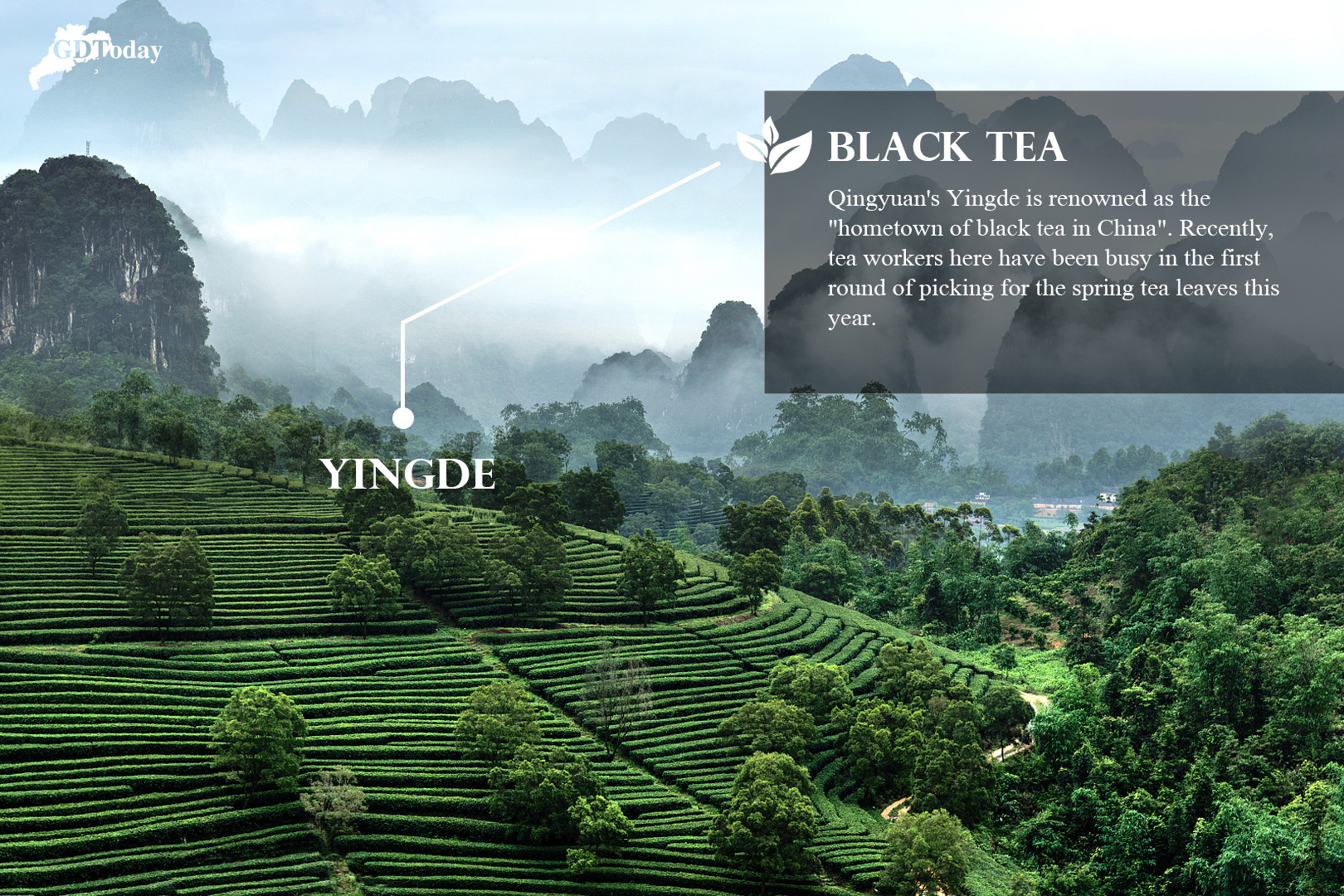
Qingyuan's Yingde is renowned as the "hometown of black tea in China". Recently, tea workers here have been busy in the first round of picking for the spring tea leaves this year.
During this period, the workers can only pick a bud and a piece or two pieces of leaves for each tea blossom, with strict picking standards. Therefore, the amount ofprocessed teas that are available in market is very limited, and that's why there is a saying that goes, "The tea produced before Qingming is as expensive as gold."
Yingde is the largest black tea production base in Guangdong. Its tea culture dates back to the Tang Dynasty, over 1,200 years ago. Yingde's black tea enjoys great reputation in both China and abroad. In 1963, the British royal family popularized Yingde's black tea worldwide after offering the tea to guests at the Queen's Banquet.
By the end of 2021, the total area of the standardized tea plantations in Yingde covered about 133 square kilometers, with an annual output of dry tea reaching 13,500 tons last year, a tea output value of over five billion yuan as well as a comprehensive output value of 5.7 billion yuan. According to Qi Kangbiao, a tea expert and professor of Sun Yat-sen University, Yingde highlights favorable geological and climatic conditions, and home to a variety of first-class teas in China. Yingde is one of the tea tree species bank, with Yinghong No.9 as most widely planted of them.
Huizhou: Comprehensive plantation integrating teas, trees and medical materials
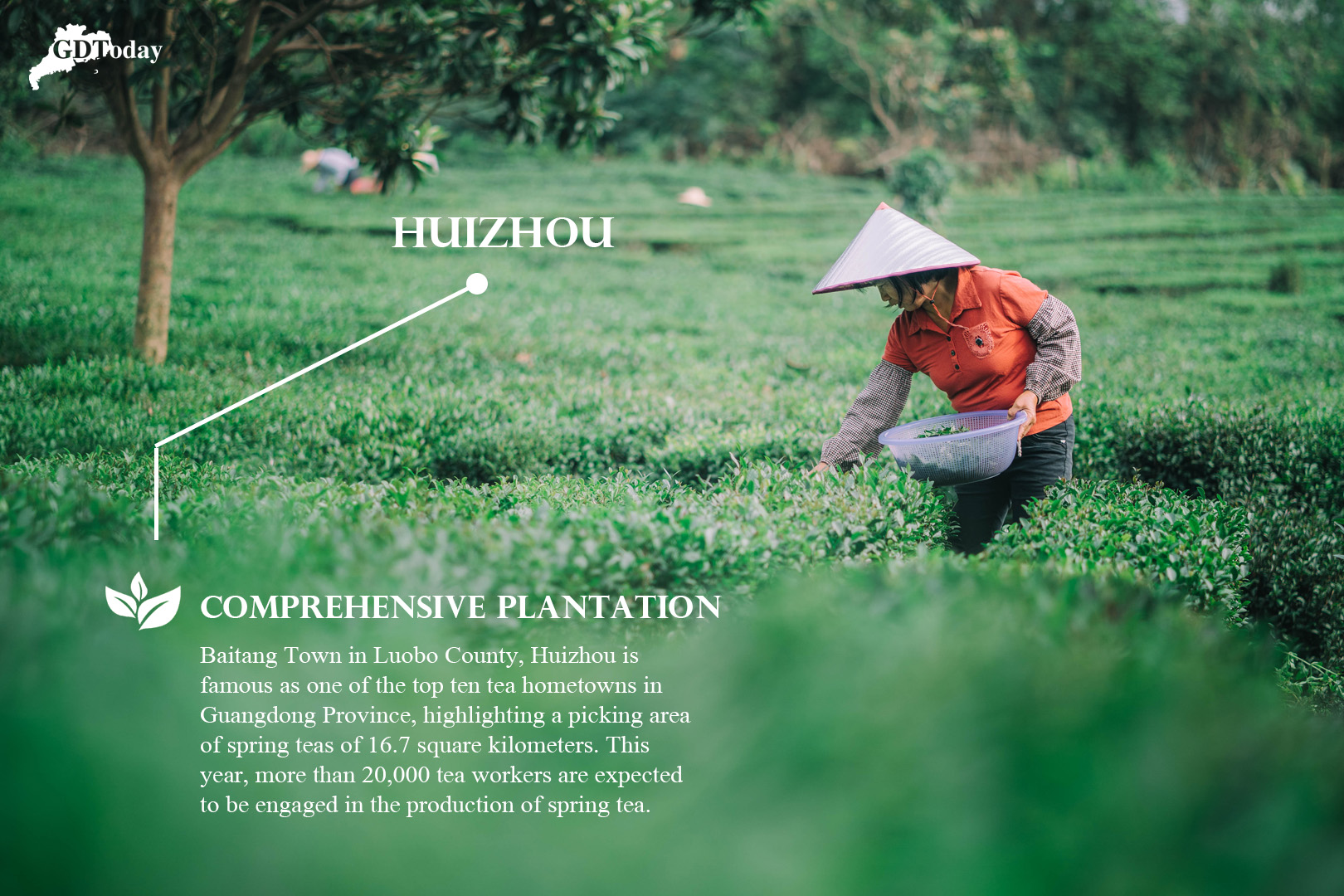
Baitang Town in Luobo County, Huizhou is famous as one of the top ten tea hometowns in Guangdong Province, highlighting a picking area of spring teas of 16.7 square kilometers. This year, more than 20,000 tea workers are expected to be engaged in the production of spring tea.
"We conduct under-forest economy, and , to be specific, that means we plant tea trees around other tree bushes in the forests. Since the back of the tea trees and the shady side of tree bushes can better retain water, we can plant some medical materials in these places to make full use of every inch of lands and to enhance the actual income of the mountainous area," said a tea worker from a tea plantation in Huizhou. In the coming period, this tea plantation plans to cooperate with South China Agricultural University to establish a comprehensive tea garden integrating teas, trees and medical materials. Covering an area of 400,000 square meters, the tea garden will further make full use of the lands and work with local farmers to increase their incomes and to revitalize the rural development.
Currently, Baitang Town is planning to build a comprehensive demonstration base integrating an agricultural product processing center, a farmer training center, an e-commerce logistics center, a tea industry distribution center and an industry incubation center. In the meantime, through the integration of farmers' organizations and tea-based professional cooperatives, Baitang Town is carrying out standardized planting and harvesting to enhance the output value of the local tea industry comprehensively.
Chaozhou: Fenghuang Dancong Tea
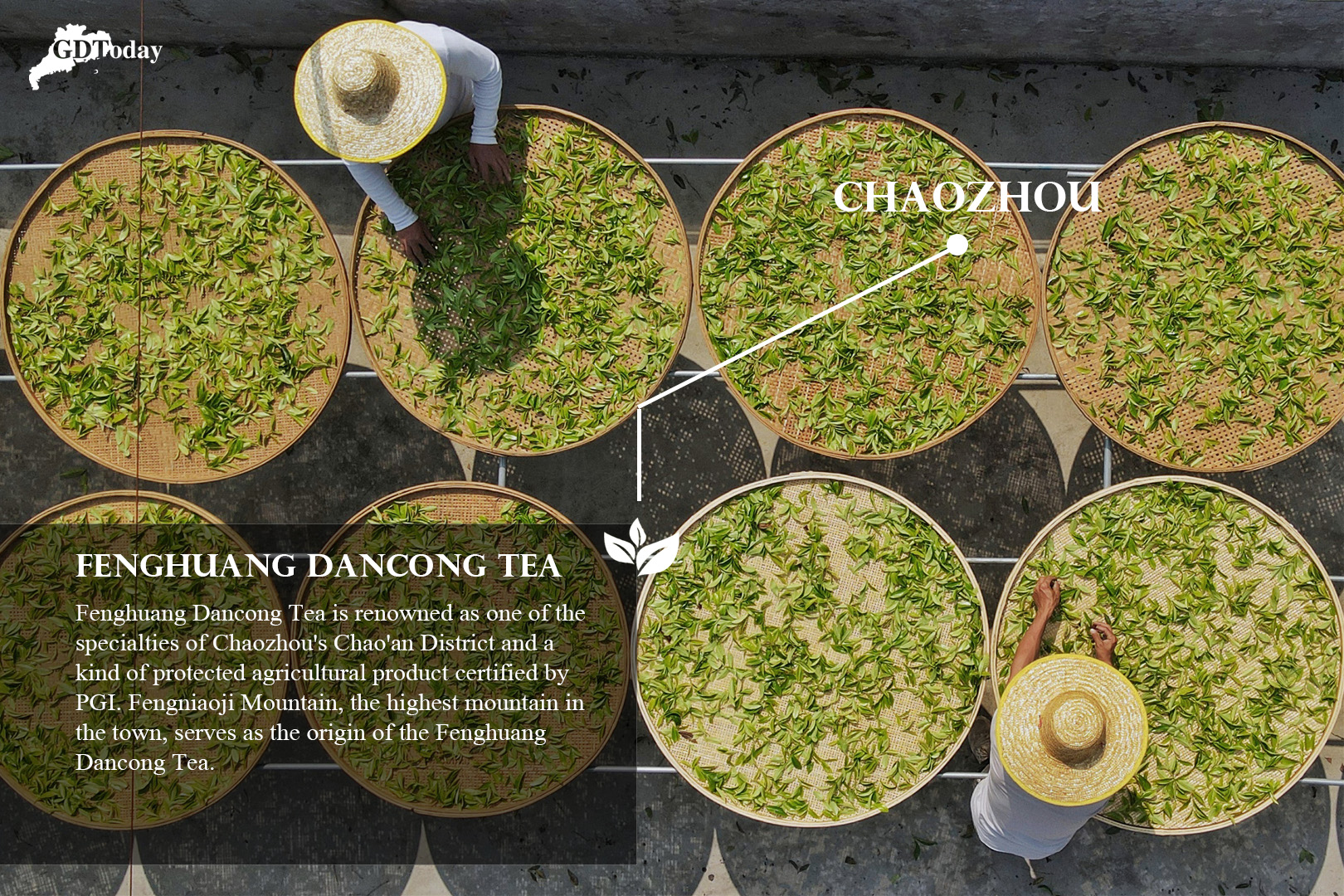
Fenghuang Dancong Tea is renowned as one of the specialties of Chaozhou's Chao'an District. It is also a kind of protected agricultural product certified by PGI. It originates from Fenghuang Town, which is named after the local Fenghuang Mountain. Fengniaoji Mountain, the highest mountain in the town with an altitude of 1,498 meters, serves as the origin of the Fenghuang Dancong Tea and it's also a professional town for tea production. So far, the tea planting area of Fenghuang Town has reached 46.7 square kilometers, imputing strong momentum to the town's economy.
According to a local tea worker, the picking period of the Fenghuang Dancong Tea ranges about 50 days. Currently, they are mainly picking those tea leaves planted in the low-altitude mountains, while the harvest season of those planted in high-altitude mountains will start at the end of March. "We need to make full use of every minute to pick the spring tea; otherwise, the tender shoots will ripen, hence the quality of the processed tea will be impacted, and so will our incomes," said the tea worker. By virtue of favorable climatic conditions, the tea leaves are thriving. Therefore, if the tea workers can harvest the tea leaves in time, a bumper harvest with high quality will be close at hand.
The tea leaves picked from the plantation need to be placed under the warm sunshine to dehydrate. Later on, a series of steps, such as drying and frying, await them to be processed into primary teas. In the following period, the primary teas will be further processed by baking and cooling to become more fragrant. Fenghuang Dancong Tea has been made available for sale.
Meizhou: Hakka Green Tea
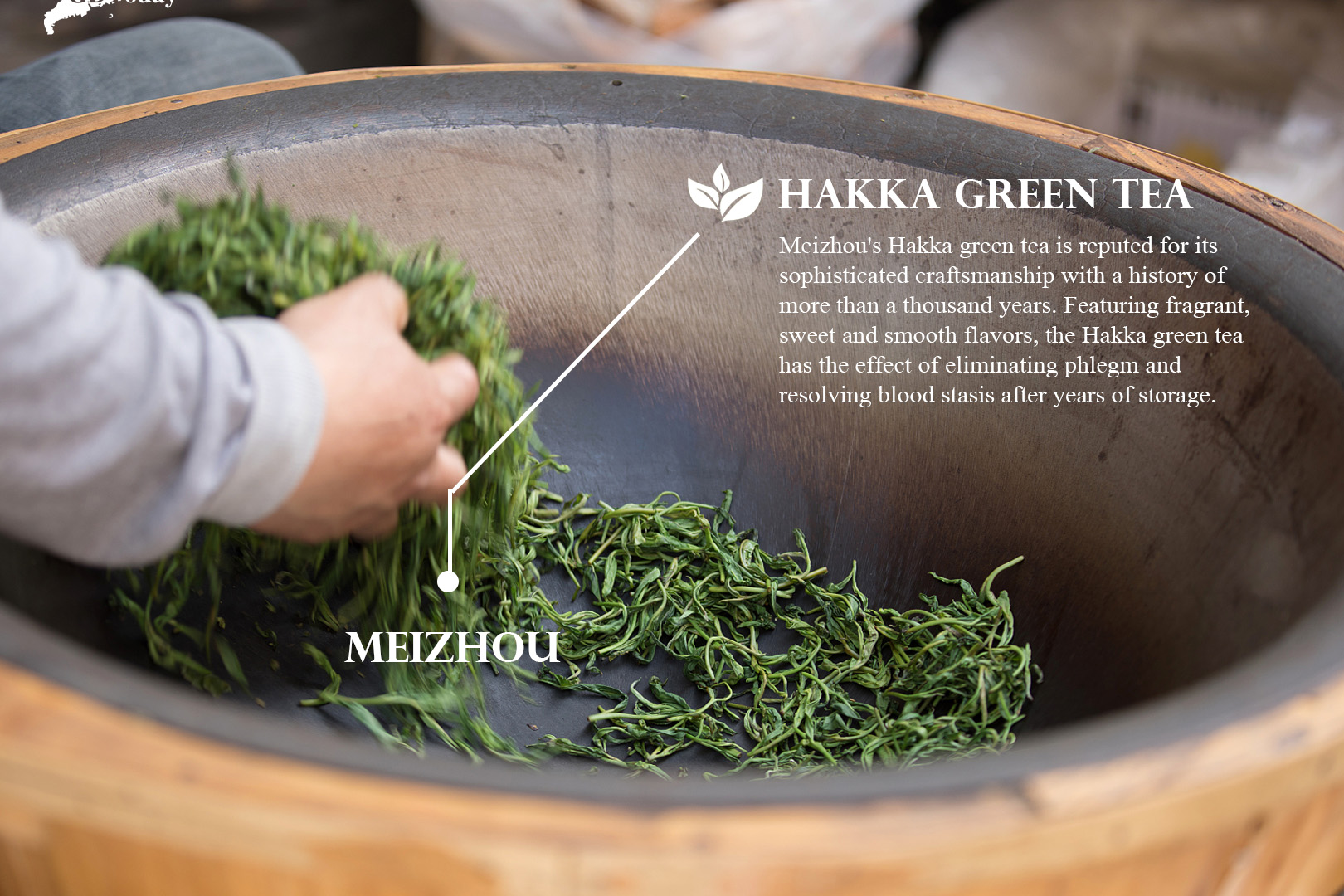
Meizhou's Hakka green tea is reputed for its sophisticated craftsmanship with a history of more than a thousand years. Featuring fragrant, sweet and smooth flavors, the Hakka green tea has the effect of eliminating phlegm and resolving blood stasis after years of storage.
Hakka green tea production incorporates four procedures, namely, picking, kneading, drying and frying. After these four steps, the green tea is ready to serve. If fried again and again after being stored for at least half a month, the Hakka green tea will give off a unique rice fragrance with a tender flavor.
Located in the high-altitude mountainous areas, Meizhou's tea plantations are pervaded by clouds and fogs all year round. A tea worker said that with sufficient rainfalls and higher germination rates, the production of his tea plantation this year is expected to increase by 20% to 30% compared to last year.
Over the past few years, Meizhou has seen broader tea planting areas and increasing yields year by year. As of 2021, the planting area of tea trees in the city has been up to 218.2 square kilometers, accounting for a quarter of the total amount of Guangdong Province, with an annual output of 25,600 tons.
Shaoguan: Baimao (White-hair) Tea
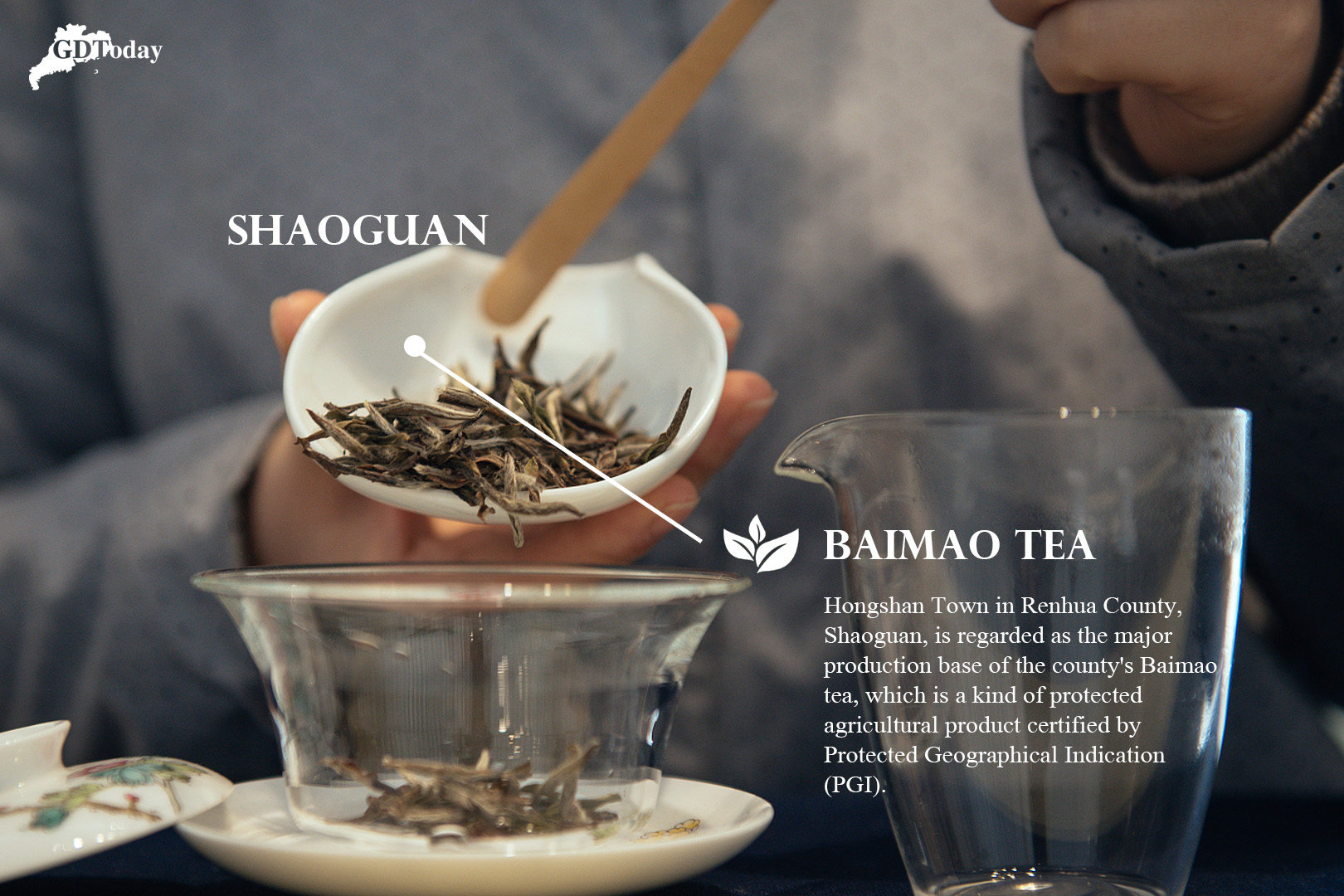
Hongshan Town in Renhua County, Shaoguan, is regarded as the major production base of the county's Baimao tea, which is a kind of protected agricultural product certified by Protected Geographical Indication (PGI). At the spring equinox, tea workers are dedicated in picking and processing the 9.27 square kilometers of white-hair tea in the town.
White-hair Tea Plantation is the species bank and the seedling experiment demonstration base for the white-hair tea in Renhua County. Over the past few years, the plantation has committed itself to promoting a newly-bred variety called Danxia No.9. At present, the farmers in the plantation are working to pick the tea leaves and bake them in batches.
Hongshan White-hair Tea used to be a kind of royal tribute in the Ming Dynasty. Up to now, it has been certified as an organic food by the China Organic Food Certification Center. It has also been included in the National List of Famous, Special and New Agricultural Products. In recent years, Hongshan Town has been working to create a high-end brand named Danxia White-hair Tea. So far, this town has established 19 workshops including tea cooperatives and processing plants, so as to motivate local farmers to increase their incomes.
Author | Alice, Nancy(intern)
Editor | Wing, Olivia, Monica, Jerry
Photo | Nanfang Daily, VCG
















